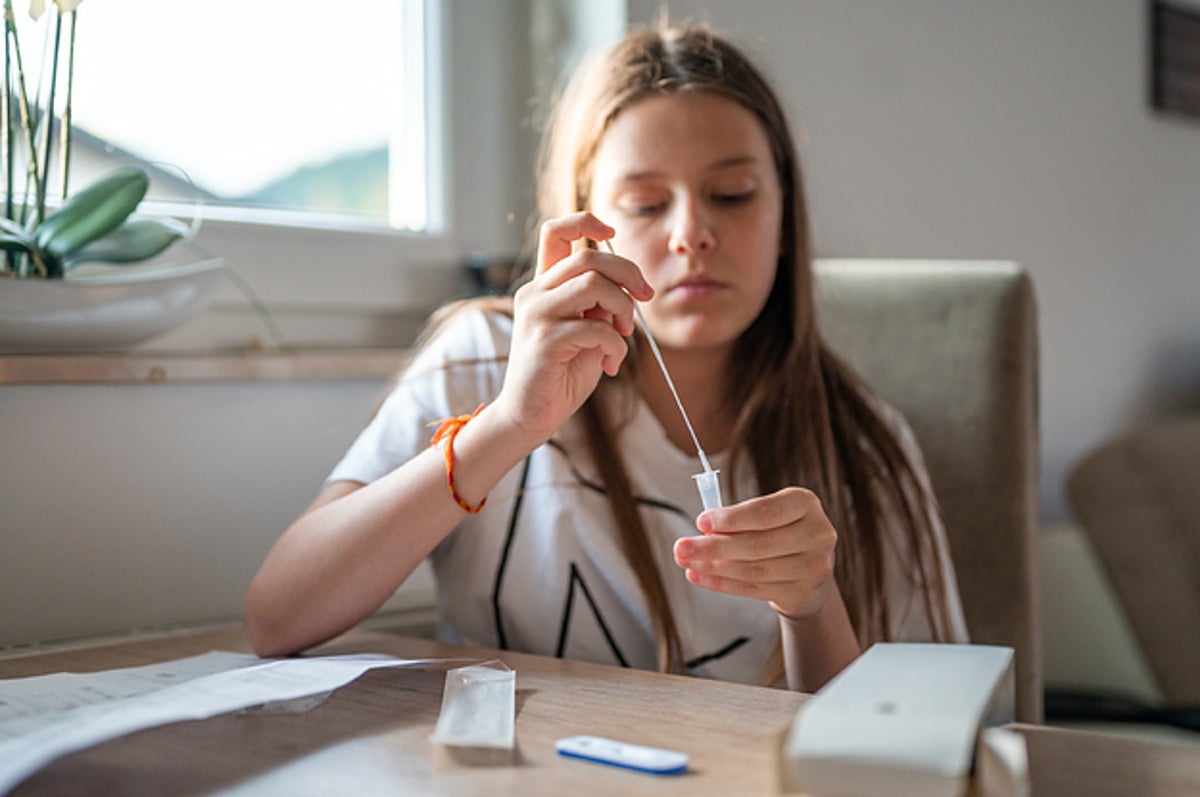People are posting on social media that they’re getting positive COVID results after swabbing their throat for an at-home rapid test rather than doing the recommended nasal swab.
In a TikTok with more than a million views, a reporter demonstrated that when she swabbed her nose for an at-home rapid COVID-19 antigen test, the result was negative.
But when Alison Hall swabbed her throat minutes later and did the same kind of test, it came back positive. She also later confirmed a positive result with a PCR test.
“Moral of the story — consider swabbing your throat in addition to your nose for early detection and get a backup PCR test to confirm,” she says in the video.
#SwabYourThroat also trended on Twitter, as multiple people posted about testing positive to COVID with a throat swab after negative nasal swabs. Manufacturers recommend nasal swabs, however, and all the data on how well the tests work are based on using it as instructed. As Omicron sends the world to record levels of COVID infections, and long testing lines make it harder to get PCR tests, people are often relying on at-home rapid tests to see if they’re infected. A sore throat is a trademark Omicron symptom and many people report it being their first indication of having the virus.
But experts don’t endorse throat swabbing — even if some of them are doing it themselves on their own home tests. For one, the FDA does not recommend using tests incorrectly.
Nam Tran, an associate clinical professor in the department of pathology and laboratory medicine who oversees COVID-19 testing efforts at UC Davis Health, told BuzzFeed News that he does not recommend swabbing the throat because a lot of things could affect it, such as food in the throat. Even drinking something beforehand could cause the virus to wash down and not appear on the test.
He acknowledged that it was possible a throat swab result may come back positive earlier. Rapid tests are more likely to give a false negative early on, which may be why people want to swab their throat.
“There’s a biological factor, meaning the virus may replicate more early on in the throat and expand thereafter,” he said. However, it’s not as simple as just using a throat swab to collect it.
“There’s a technological factor,” he said. “How good are you at collecting a nasal swab versus an oral swab?”
A throat swab is more complicated to perform. “Technique matters because you can have a perfect test and if you just swab loosely or lightly because you have a sensitive nose or sensitive mouth, you might not get enough virus for your test to detect it anyway irrespective of where the virus lives,” Tran said.
If someone has symptoms of COVID-19 but gets a negative result on an at-home antigen test, Tran said to go to the doctor or to get a PCR test because it’s important to test over time.
“At some point, the viral concentration goes up high enough where the test will pick it up anyway,” he said. “But if you are symptomatic, test negative, out of the abundance of precaution, you should still mask up, you should still try to stay away from people.”
Michael Mina, chief science officer of eMed, said during a Zoom webinar Thursday that throat swabbing for COVID-19 is still so new, many people might not know how to do it, but he’s hopeful people will learn.
“We know throat swabs can work, but saliva is different,” he said. “Throat swabs might be working because they’re mixing with saliva in terms of where you’re putting your swab in your Oropharynx or your cheeks depending on how you’re doing it.”
He said antigen tests have always been less sensitive than PCR tests, but it’s not that antigen tests aren’t detecting Omicron, it’s just that people are becoming infectious with this variant before the virus has a chance to grow into the nose. Like Tran, Mina said symptomatic people should assume they have COVID-19.
Mina said swabbing the throat can be dangerous, so people should follow the FDA guidance, but he acknowledged the FDA also has to exist within tight guidelines that sometimes have more practical than scientific origins.
“I think oftentimes people assume that the way it’s been authorized by the FDA is always optimal, like the spacing with the vaccines,” Mina said. “The three to four weeks was not optimal, that was out of convenience to get the clinical trials done quickly. But then because that’s the data that’s given to the FDA, that’s what the FDA has to authorize because they don’t have other data to suggest otherwise even if the science says a different picture.”
He admitted he does swab his throat when he’s using an at-home test, but if others do the same, they should do so at their own risk.
Blythe Adamson, a health economist and pharmacoepidemiologist serving as principal quantitative scientist at Flatiron Health, told BuzzFeed News that she thinks as soon as scientists believe throat swabbing is safe and effective, the FDA will most likely move quickly to authorize it.
In a statement provided to BuzzFeed News, an FDA spokesperson said COVID-19 tests should be used as authorized.
“The FDA has noted safety concerns regarding self-collection of throat swabs, as they are more complicated than nasal swabs – and if used incorrectly, can cause harm to the patient. The CDC recommends that throat swabs be collected by a trained healthcare provider.”
On Twitter, the FDA said that they don’t have any data that suggests throat swabs are accurate.
